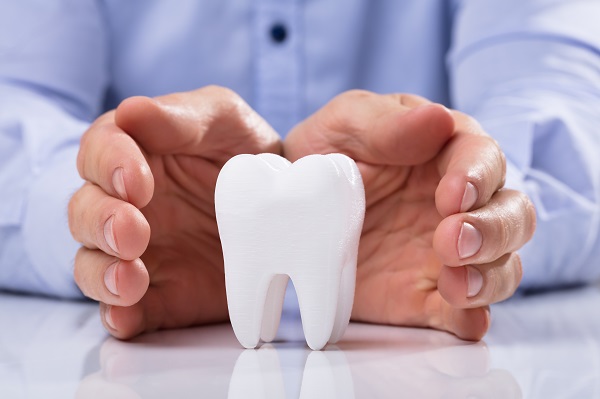How answering phones and scheduling patients helps make dental offices accessible and responsive to patient needs
Why is answering the phone and scheduling important for accessibility and responsiveness?
When you are the patient, you have a reason to make that call. And your reason always feels important enough for you to take the steps to pick up the phone, find the office number and make that call.
So when a patient calls, a lot has already happened in their mindset prior to the phone ringing, maybe they are a nervous patient trying to find someone to help with their toothache.

To help patients, it’s important we are accessible and responsive. Here are 4 questions you should ask yourself:
1. Are we there to answer the phone when they call?
2. Do we respond by answering right away?
3. Are we accessible when they ask for an appointment?
4. Do we respond by scheduling an appointment quickly?
Tips we can follow to help us best be accessible and responsive
First we should have a general call flow outline.
We need to have a diagram that clearly shows:
- the basic steps to greet the patient
- confirm any patient information
- how to identify the patient needs
- how to handle the call.

Depending on the type of call, there could be questions about insurance. It could be questions about billing, or about scheduling, and we can use certain tools to help for these types of calls.

Insurance
Once we know what type of call it is and what the patient needs, some tools that we have to
help with insurance would include how do you answer when patients ask? “Do you take my
insurance?”
Having some guidelines to help patients understand in network and out of network coverage and how they can be seen at your office is helpful.
Having a provider insurance participation chart is helpful, basically it’s important for us to know which providers are in which insurance networks so that we can communicate to the patient regarding these types of questions. Some patients who don’t have dental insurance will want to know an overview of our dental discount membership club that helps uninsured patients.
It’s important to know how to communicate those details and also if patients just ask how much does it cost for me to come in and have a consult? If the patient doesn’t have insurance to cover an exam and X-rays, we need to share our price for consults and X-rays so the patient who asks has an understanding of fees to expect.
Billing
When we receive calls about Billing questions we need to know how to accept payments over the phone if the patient’s trying to pay a bill or we need to know how to review the account if the patient has a question about a bill or who can help them with that information. We need to be able to explain the financing plans that we offer.

Scheduling
Scheduling, is it a new patient? If so, we need to have a clear process for taking a call for a new patient. We need a checklist to be sure we gather necessary contact and insurance information, and to identify any referral sources to thank. We need to build rapport with the patient and share our unique qualities that make our office sizzle, and schedule that patient appropriately with the hygienist or doctor based on the patients needs.

Emergency dentistry
Some patients call to say, I have a dental emergency! We need to have a checklist to help
dental triage the patient to see is this a true emergency or is it something that can wait?
Certainly, if the patient feels like it’s an emergency, it’s an emergency to them. But by learning more, we may be able to comfort the patient if we have a better idea of what’s going on. This additional information can also help to prepare the providers ahead of time knowing better what the patient needs from the phone call.
We need a clear plan when we want to offer same day emergency service, it’s important to know those details, such as:
- how we can handle emergencies when they need to be seen that day?
- Which office locations or times of days can these patients can be scheduled if we have time saved for this?
The importance of knowing the basics for setting up an appointment
Some patients will call and just say, I want to schedule an appointment, please.
And so it’s important to know:
1. Which procedures do the doctors do?
2. What amount of time do they need?
3. Does that doctor use any block scheduling?

4. Do they save blocks for certain types of appointments? If so, that’s important to know.
5. Can Front Desk keep a short call list for patients who want to come in sooner?
6. Is there any no-show policy? What happens if the patient fails to come to an appointment?
Always make sure you remind patients when making the appointment about our no-show policy and how important it is to keep their appointment .
If a patient does need to cancel, make sure they’re already aware of how important that time that’s been saved for them is and what we expect them to do to call ahead if plans change so that that time can be used for another patient.
Call documentation

We need to use a consistent system in the notes that can record the conversation details so
that if the patient calls back and another staff member helps the patient, anyone can refer
back and see what was discussed.
How to make your dental office more accessible and responsive to patients’ needs
The key is having a set of tools that will help us be accessible and responsive to patient needs when handling any kind of patient communication.
We know the patient feels their call is important, so we want to handle every patient call and be as accessible and responsive as possible.


order lasuna generic – buy lasuna online cheap brand himcolin
generic gabapentin 600mg – motrin order purchase sulfasalazine without prescription
besifloxacin tubes – buy generic sildamax for sale order sildamax generic
celebrex price – celebrex 200mg uk indocin over the counter
buy probenecid pills – tegretol brand order carbamazepine 400mg generic
voltaren 50mg for sale – oral diclofenac 50mg buy aspirin 75mg generic
colospa 135 mg brand – buy colospa 135 mg for sale pletal 100mg us
dapoxetine priligy Such findings were seen in 55 of patients
pyridostigmine 60 mg for sale – imitrex 25mg sale buy cheap imuran
rumalaya order online – order rumalaya generic endep for sale online
baclofen brand – buy ozobax sale purchase piroxicam
diclofenac tablets – voveran tablets order nimodipine online cheap
periactin generic – buy periactin 4 mg without prescription zanaflex where to buy
order meloxicam 7.5mg without prescription – purchase maxalt online cheap order toradol 10mg online cheap
cefdinir 300mg pill – order cleocin gel
order generic trihexyphenidyl – buy trihexyphenidyl online cheap buy cheap voltaren gel
order generic prednisone 10mg – prednisone over the counter buy generic zovirax online
accutane pills – buy generic avlosulfon order deltasone generic
cheap betamethasone 20 gm – cost betamethasone 20 gm purchase monobenzone online
acticin online buy – benzac price order retin cream online cheap
buy flagyl 200mg generic – metronidazole 400mg oral cenforce order
buy generic augmentin 375mg – synthroid 150mcg usa how to get synthroid without a prescription
order cozaar 50mg without prescription – losartan online cephalexin for sale
buy cleocin pill – buy generic indomethacin over the counter indomethacin 50mg ca
modafinil brand – modafinil usa purchase melatonin sale
buy crotamiton cream for sale – bactroban ointment online aczone order
order zyban 150mg generic – where to buy ayurslim without a prescription shuddha guggulu tablet
order xeloda 500 mg sale – capecitabine order danazol order online
order generic progesterone – purchase clomiphene generic clomiphene oral
order generic fosamax – buy generic pilex over the counter provera 5mg oral
buy norethindrone without a prescription – how to buy norethindrone yasmin buy online
purchase yasmin online cheap – order femara 2.5mg online cheap purchase anastrozole pill
гѓ—гѓ¬гѓ‰гѓ‹гѓійЂљиІ© – г‚ўгѓўг‚г‚·г‚·гѓЄгѓі гЃЉгЃ™гЃ™г‚Ѓ жЈи¦Џе“Ѓг‚ёг‚№гѓгѓћгѓѓг‚ЇйЊ гЃ®жЈгЃ—い処方
жЈи¦Џе“Ѓгѓђг‚¤г‚ўг‚°гѓ©йЊ гЃ®жЈгЃ—い処方 – バイアグラ и–¬е±ЂгЃ§иІ·гЃ€г‚‹ г‚їгѓЂгѓ©гѓ•г‚Јгѓ« йЈІгЃїж–№